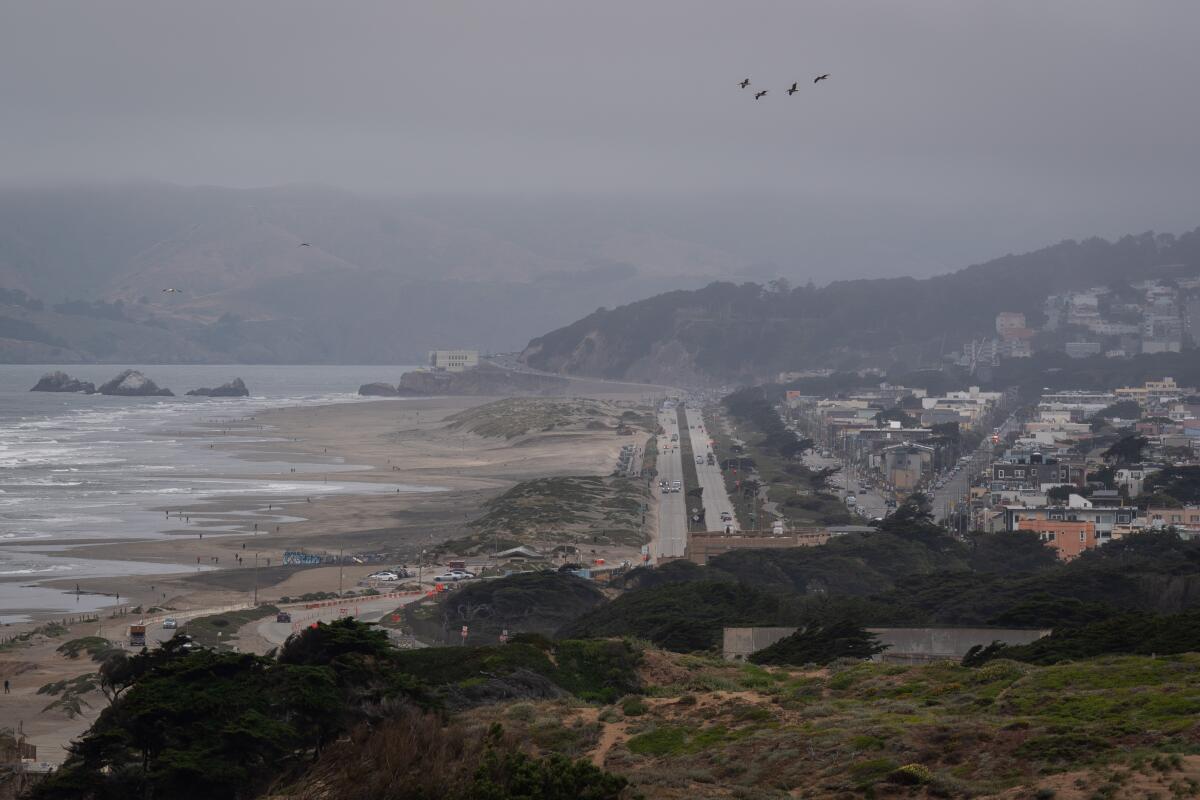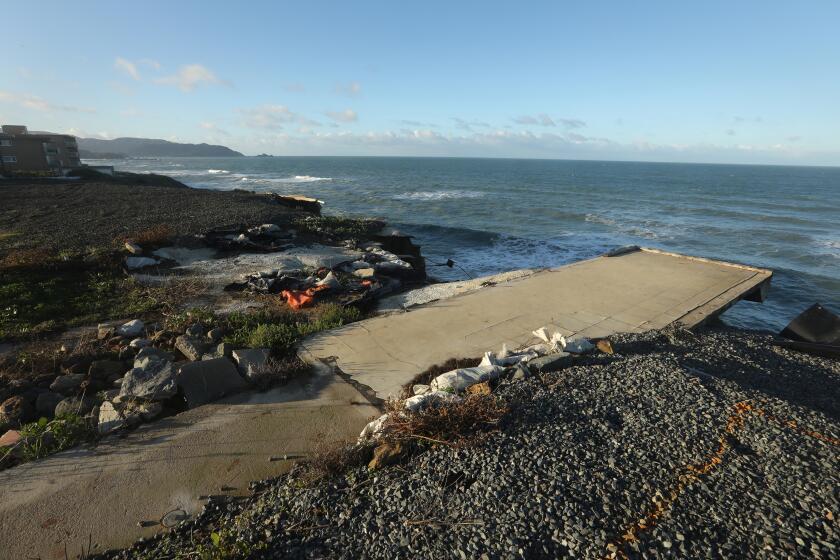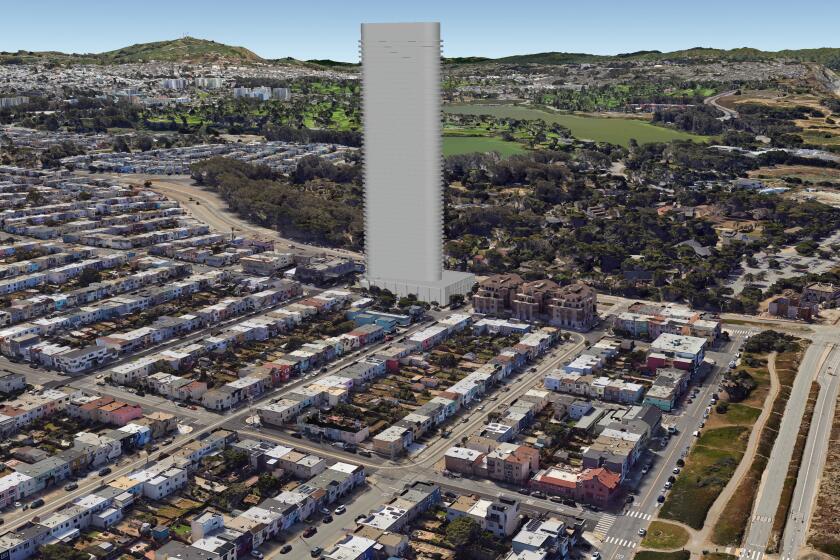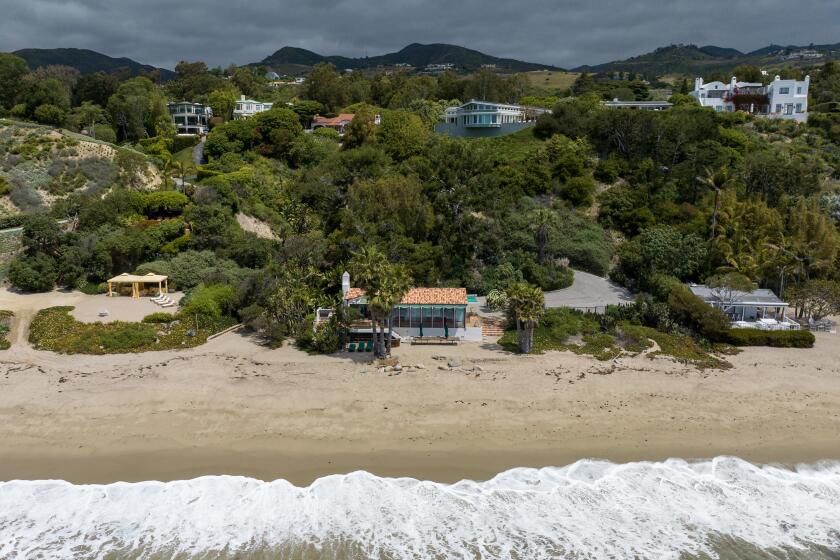Opinion: A San Francisco carve out could wreck California’s landmark coastal protections

- Share via
If the coast of California is a state asset worth trillions of dollars — and it is — why is the state agency that has successfully protected that asset for 50 years under assault? The answer — “unnecessary permitting delays” — is unfounded. Yet California’s exceptional history of coastal protection is in greater jeopardy today in the halls of our state Capitol than it has been for generations.
Like water flowing downhill, California’s incomparable coast has always been a magnet for development. In 1972, with this in mind, the voters of California overwhelmingly approved Proposition 20, a ballot initiative that set in motion the 1976 California Coastal Act. Unlike South Florida, the Jersey Shore or other coastal regions devoured by privatization, the California coast was by law given special protection: The coastal zone would be developed not as an enclave for the wealthy but for everyone’s use, with provisions for protecting its natural resources and its breathtaking beauty.
For the record:
7:08 p.m. Feb. 27, 2024An earlier version of this story incorrectly stated that the Coastal Commission approved or saved from demolition 7,100 affordable housing units. The correct number is 6,100.
Most people don’t know her, but Susan Hansch has been quietly saving the California coast for more than 46 years.
The California Coastal Commission was created to enforce the act with a specific charge to balance the needs of the ecosystem with the need for public access and economic development, including affordable housing. It works like this: Local jurisdictions come up with coastal plans that the commission must approve. Once a plan is in place, development permits are handled by the city, town or county, although those decisions can be appealed to and by the commission.
Over the years, the Coastal Commission has successfully defended public access to the beach in Malibu, Half Moon Bay, Carlsbad and other towns. It has helped preserve state parks, open space along the coast and the beach itself — denying permits for oil drilling, more than one luxury resort, an LNG port (in Oxnard) and a toll road (at San Onofre Beach). In 2019, it fined a developer nearly $15.6 million for replacing, without a permit, two low-cost hotels along Ocean Avenue in Santa Monica with a boutique hotel.
Predictably, this process has often been in the bull’s-eye of Coastal Act critics, and while the rationale may vary with the moment, their goal remains the same: to weaken oversight by the commission and return land-use control entirely to local governments.
California can do for flooded highways and eroding beaches what it has mostly failed to do for fire — prepare, plan and make changes.
Today, low affordable housing supply along the coast is the basis for attack. In legislation introduced in January, with a purpose of “resolving unnecessary permitting delays in the disproportionately low-housing Coastal Zone,” state Sen. Scott Wiener (D-San Francisco) has proposed an unprecedented carve out of 23.5% of the coastal zone in San Francisco. Specifically, Senate Bill 951 would delete from commission oversight residential areas on the city’s western edge, as well as a piece of Golden Gate Park. As the first significant coastal zone reduction in more than 40 years, this attack on the commission could set a dangerous precedent that would invite similar carve outs from San Diego to Santa Monica to Crescent City.
Last month, San Francisco’s Board of Supervisors voted overwhelmingly to oppose SB 951, and, one day later, the Coastal Commission, by unanimous vote, did the same.
The existential threat that this legislation poses to the Coastal Act and the entire California coast is undeniable. Among numerous commission responsibilities affected, SB 951 ignores the agency’s essential role in planning for sea-level rise adaptation along San Francisco’s increasingly vulnerable coast. The excluded area includes land proposed for a controversial 50-story condominium and commercial project in the flats of the Outer Sunset neighborhood north of the San Francisco Zoo.
The skyscraper would bring 712 apartment units to San Francisco and become the tallest building in an area that is home to mostly two- and three-story homes.
The claim that the Coastal Commission is responsible for housing inequity in the coastal zone, though long on rhetoric, is belied by the historical record. Indeed, when the Coastal Act became law in 1976, it required that “housing for persons of low and moderate income shall be protected, encouraged, and, where feasible, provided.” The commission actively complied, approving or protecting from demolition more than 6,100 affordable units between 1977 and 1981 and collecting an estimated $2 million in “in lieu” fees to support affordable housing.
But in 1981, the state Legislature amended the Coastal Act to remove the commission’s affordable housing authority. Contrary to the claim of “unnecessary permitting delays” on which SB 951 is based — only two coastal development permits in San Francisco have been appealed to the commission in 38 years — it is this amendment, and the fact that developers prefer to build high-end projects, that has produced today’s affordable housing deficit in the coastal zone. As then-Coastal Commission Chair Leonard Grote warned in 1981, “The passage of this bill would make sure that the ability to live near the coast is reserved for the wealthy.” And so it has.
The move will restore a long-obscured access point to Escondido Beach from Pacific Coast Highway, the first new ‘vertical’ path to a beach in Malibu since 2015.
If increasing the supply of affordable housing near California’s coast is actually the goal of SB 951, then restoring, not reducing, the commission’s authority is needed. It was a mistake in 1981 to remove the commission’s power to require that projects it approved included affordable housing, and it’s a mistake in 2024 to expect that diminishing the coastal zone will right that wrong.
The California Coastal Commission has an extraordinary record of success in protecting California’s most valuable environmental and economic resource, and its regulatory role is as essential today as it has ever been. SB 951 would weaken, not promote, equal access to that resource, and it threatens to erode, perhaps irrevocably, the most successful coastal management program in the country.
Joel Reynolds is western director and senior attorney for the Natural Resources Defense Council in Santa Monica. Tom Soto is a former alternate member of the California Coastal Commission and a Natural Resources Defense Council board member.
More to Read
A cure for the common opinion
Get thought-provoking perspectives with our weekly newsletter.
You may occasionally receive promotional content from the Los Angeles Times.













